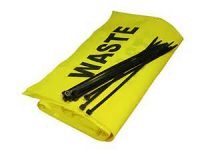Break a Safety Regulation, Get 1 Year in Jail; Conspire to Do it, Get a Lot More?
Earlier this year, former Massey Energy CEO Don Blankenship was brought to trial on charges of conspiracy to violate mandatory federal mine safety and health standards, conspiracy to impede federal mine safety officials, making false statements to the Securities and Exchange Commission, and securities fraud. Blankenship faced up to 31 years in prison on the […]










